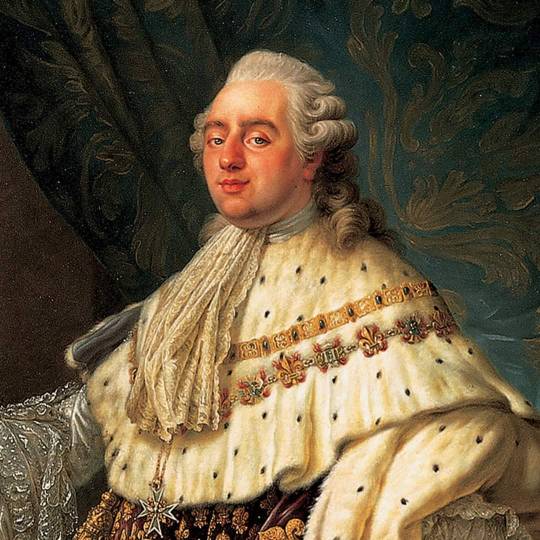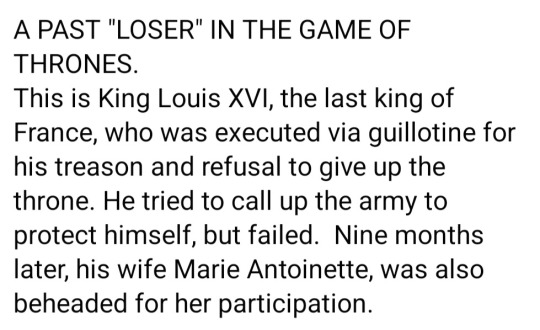#king louis XVI
Photo

Louis Cunningham as King Louis XVI & Emilia Schüle as the titular character in Marie Antoinette (TV Series, 2022- ).
#louis cunningham#emilia schüle#marie antoinette#perioddramaedit#king louis xvi#18th Century#marie frémont
101 notes
·
View notes
Text
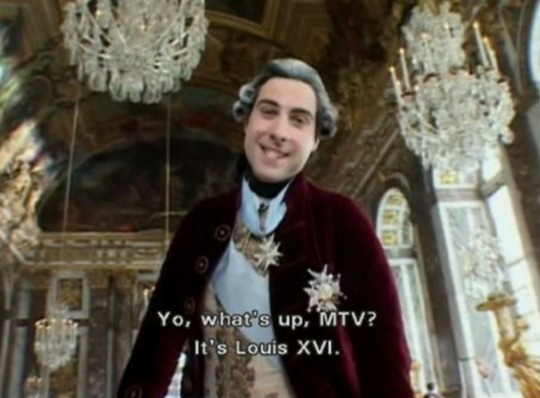

#marie antoniette 2006#jason schwartzman#sofia coppola#king louis xvi#MTV#behind the scenes#the making of Marie Antoinette
43 notes
·
View notes
Note
why are u such a LOSERRR MAN UP BOY!!!!!
-kindest regards ^_^, King George III
。゚(゚´Д`゚)゚。
such harsh words..


7 notes
·
View notes
Text

Marie Antoinette with her children Louis Joseph, Dauphin of France (22 October 1781 – 4 June 1789), and Marie Thérèse Charlotte, Madame Royale (19 December 1778 – 19 October 1851).
Portrait by Charles Le Clercq, 1781.
—
Marie Antoinette (Marie Antoinette Josèphe Jeanne; 2 November 1755 – 16 October 1793) was the last queen of France before the French Revolution.
She was born an archduchess of Austria. She was the penultimate child and youngest daughter of Empress Maria Theresa and Emperor Francis I.
She became Dauphine of France in May 1770 at age 14 upon her marriage to Louis-Auguste, heir apparent to the French throne.
On 10 May 1774, her husband ascended the throne as Louis XVI and she became queen.
#Marie Antoinette#Louis-Auguste#King Louis XVI#Louis Joseph the Dauphin#Marie Thérèse#House of Habsburg-Lorraine#House of Bourbon#French Revolution
18 notes
·
View notes
Text
King Louis XVI fanart
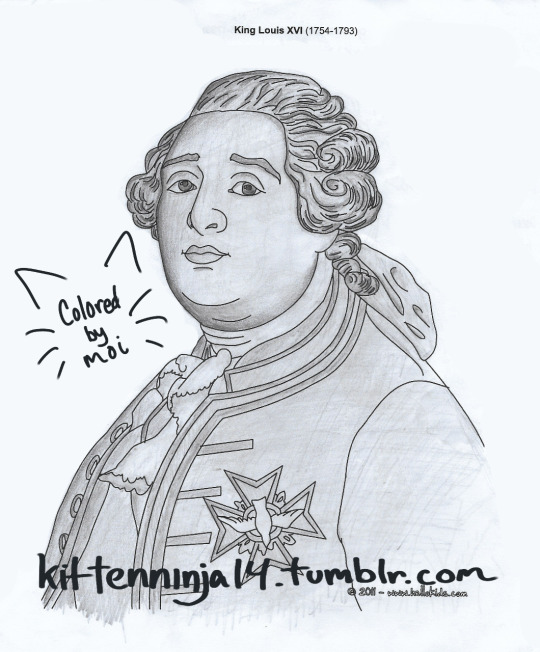
I shaded this picture in World Civ bc I was bored, loll.
This was the original pic

Anyways, hope y'all liked it!!
Byeeee!!
https://kittenninja14.tumblr.com/post/731916269075480576/hey-yall-i-just-found-this-incredible-video-and
#shading#coloring pages#coloring#pencil#pencil shading#king louis xvi#american revolution#french revolution#18 century#paper and pencil#my art#KittenNinja14#KN draws#KN14 draws
2 notes
·
View notes
Text
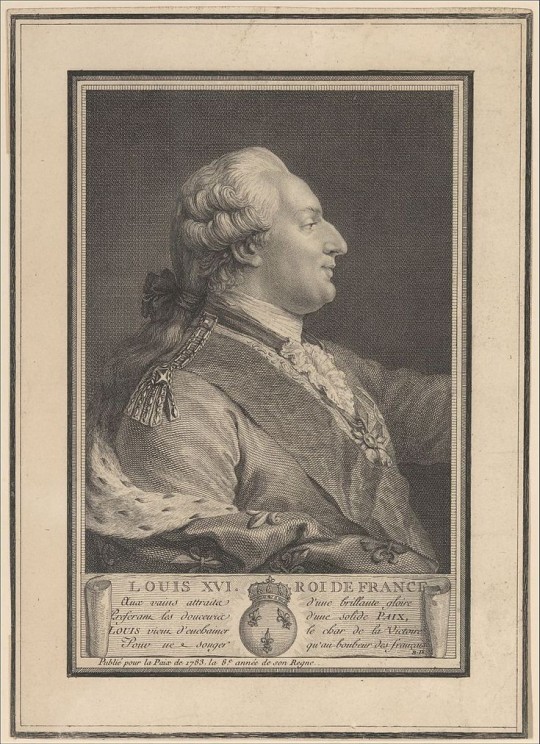
Louis XVI, King of France and Navarre
20 notes
·
View notes
Text
About me, the Queen de France
Bonjour, tout le monde! I am Marie Antoinette (Maria Antonia en allemand), the queen de France. Following the death of Louis XV in May of 1774, my husband, King Louis XVI, and I rose to the throne and I became the queen. I reigned over France for 19 years until I was executed in 1793 :/
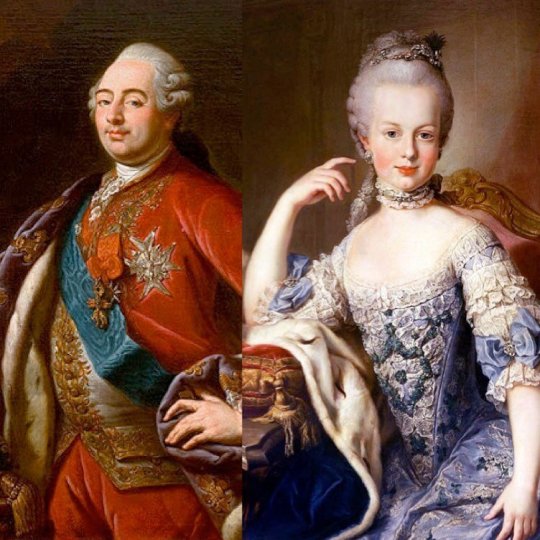
Voici deux belles peintures of me and my husband.
youtube
Et en plus, here is a brief video explaining a bit about ma histoire <3
2 notes
·
View notes
Text
Historical figures should try being named something other than Louis. Especially the french ones. It's very rude of them to confuse us by all having the same name like that
#king louis I#king louis II#king louis III#king louis IV#king louis V#king louis VI#king louis VII#king louis VIII#king louis IX#king louis x#king louis xi#king louis xii#king louis xiii#king louis xiv#king louis xv#king louis xvi#king louis xvii#king louis xviii#louis philippe#louis philippe ii#louis napoleon#louis kosuff#all the gooddamn louis tagged for demonstrative purposes#there are more though
9 notes
·
View notes
Quote
The day after his return Lafayette went to La Muette to report to the king and to pay his respects. Louis XVI greeted him cordially and paid him many compliments. The king spoke of Washington in terms of 'confidence, regard, admiration and affection,' though he would make no promises of future aid to America. The noblemen of the court crowded around Lafayette and expressed their approval. Many of them began to seek permission to go to America and emulate his example.
Lafayette In America by Louis Gottschalk, Chapter XV, pp. 349-350. Amazing how opinions changed! The same kid that almost didn’t go to America because the king told him no, the same young man that was laughed at by nobles at court, had both king and court applauding him. Wild.
#marquis de Lafayette#King Louis XVI#George Washington#Lafayette In America#Louis Gottschalk#Chapter XV#pp. 349-350
23 notes
·
View notes
Text
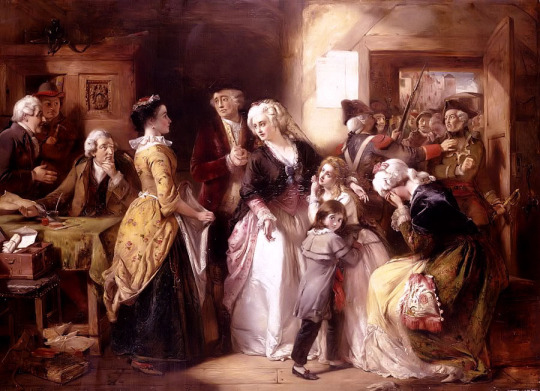
The arrest of Louis XVI and his family following their failed escape from Paris, 22 June 1791
by Thomas Falcon Marshall
Attempting to flee the Revolution in Paris, Louis XVI and Marie Antoinette are captured in Varennes and ultimately executed for treason. The escape was compromised by a conspicuous carriage, armed retinue and lack of disguises.
#louis xvi#king#queen#king louis xvi#royal#family#royal family#french#marie antoinette#france#varennes#escape#capture#arrest#art#carriage#monarchy#history#painting#europe#european#french revolution#revolutionaries#paris#thomas falcon marshall#flight to varennes#royalists#montmédy#bourgeois
23 notes
·
View notes
Text
Tennis Court Oath
On 20 June 1789, the members of the French Third Estate took the Tennis Court Oath in the tennis court which had been built in 1686 for the use of the Versailles palace.
During the Estates-General Assembly in 1789, the French people, represented by three estates (clergy, nobility, and commoners), convened to address the country's financial crisis and political issues. However, tensions arose between the representatives of the Third Estate (commoners) and the other two estates, as the Third Estate sought equal representation and voting power, which the clergy and nobility were reluctant to grant.
Frustrated by the lack of progress and the inequality within the Estates-General, the representatives of the Third Estate decided to break away and form their own assembly. They called themselves the National Assembly, declaring that they represented the will of the French people. Their goal was to create a new constitution for France and initiate reforms.

However, when the National Assembly arrived at their meeting place in Versailles on June 20, 1789, they found that the doors to their usual meeting hall had been locked by orders of King Louis XVI. Fearing that the king was trying to dissolve their assembly and suppress their efforts, they relocated to a nearby indoor tennis court known as the "Jeu de Paume" to continue their proceedings.
Inside the tennis court, the representatives of the Third Estate, led by figures like Maximilien Robespierre and Camille Desmoulins, took an oath not to disband until they had successfully created a new constitution for France. This oath is now known as the Tennis Court Oath. The oath solidified the resolve of the National Assembly to stand united against the traditional order and marked a crucial turning point in the French Revolution, inspiring people across the country to support the cause for change.
The Tennis Court Oath was a critical step in the revolutionary process. Eventually, it led to further significant events such as the storming of the Bastille, the abolition of feudal privileges, and the transformation of France into a constitutional monarchy, followed by the eventual abolition altogether.
#Tennis Court Oath#French Revolution#History#French History#National Assembly#Estates-General#Versailles#Maximilien Robespierre#Camille Desmoulins#King Louis XVI#Constitutional Monarchy#Revolution#Political Events#18th Century#European History#today on tumblr#deep thinking
2 notes
·
View notes
Text


Went to the New Orleans Museum of Art today and saw this portrait of Marie Antoinette and Louis XVI!! absolutely breath taking to see this paintings irl
12 notes
·
View notes
Note
Is Marie a good wife??
Well , even though are marriage was arranged i still think she was a lovely girl! even though she was kind of rude to me (T_T) ..
he looks down shyly was twiddling his thumbs..


2 notes
·
View notes
Text


King George III of Great Britain and King Louis XVI of France
A project I worked on very slowly, but that I'm quite pleased with. A long time customer and history buff headed off to Boot Camp asked if I could work on these for him. I worked on them while he was away and I found time in between other projects (it was refreshing to have three months of work time!). He just finished basic (congratulations, Jakob!), and his pair of Kings are headed to him now.
#funko#funko pop#funko pop custom#funkopop#hamilpop#custom funko pop#pop funko#etsy#etsyshop#etsyseller#king george iii#king Louis xvi#house of hanover#house of bourbon#british history#french history
7 notes
·
View notes
Photo

The Last Interview Between Louis XVI and His Family, by Isaac Cruikshank, March of 1793.
After the abolition of the monarchy and the proclamation of the French Republic in September 1792, the National Convention considered the fate of the deposed king. There was a broad consensus that Louis was guilty of treason against the nation and that he should answer for his crimes, but how he should do so became a subject of heated debate. The convention was divided between the Girodins and the Mountain. Of the two, the Girodins were more inclined to follow due process, where is the Mountain considered themselves to be acting as a revolutionary tribunal that had no obligation to adhere to existing French law. The Convention thus became a forum where Louis's accusers expressed competing notions of revolutionary justice.
The most divisive and revealing issue was whether there should be a trial at all. The Mountain originally took the position that because the people had already judged the king on August 10, when the monarchy had fallen and the king was taken prisoner, there was no need for a second judgement. They believed the death sentence should have been carried out immediately. Robespierre argued that a trial would have been counterrevolutionary, for it would have allowed the revolution itself to be brought before the courts to be judged. A centrist majority, however, decided that the king had to be charged with specific offences in a court of law and found guilty by due process before being sentenced.
A second issue, closely related to the first, was the technical legal question of whether Louis could be subject to legal action. Even in a constitutional monarchy, such as had been established in 1789, the legislative branch of the government did not possess authority over the king. The Convention based its decision to try Louis, however, on the revolutionary principle that he had committed crimes against the nation, which the revolutionaries claimed was a higher authority than the king. Louis, moreover, was no longer king but was now a citizen and, therefore, subject to the law in the same way as anyone else.
[...]
The unanimous conviction of the king did not end the factional debates over the king’s fate. Knowing that there was extensive support for the king in various parts of the country, the Girodins asked that the verdict be appealed to the people. They argued that the Convention, dominated by the Mountain and supported by militants in Paris, had usurped the sovereignty of the people. A motion to submit the verdict to the people for ratification lost by a vote of 424-283.
The last vote, the closest of all, determines the king’s sentence. Originally, it appeared that a majority might vote for noncapital punishment. The Marquis de Condorcet, for example, argued that although the king deserved death on the basis of the law treason, he could not bring himself to vote for capital punishment on principle. The radical response to this argument came from Robespierre, who appealed to “the principles of nature” that justified the death penalty in such cases, “where it is vital to the safety of private citizens or of the public.” Robespierre's impassioned oratory carried the day. By a vote of 361-334 the King was sentenced to "death within 24 hours" rather than the alternatives of imprisonment followed by banishment after the war or imprisonment in chains for life. The following day Louis was led to the guillotine.
- Brian Levack et al. (The West: Encounters and Transformations, Third ed., pages 630-631)
For further reading on regicide as an act of national cohesion and an attack on a foreign enemy, see Kevin Duong’s “The People as a Natural Disaster: Redemptive Violence in Jacobin Political Thought”
#history#France#French Revolution#King Louis XVI#execution#Maximilien Robespierre#death penalty#regicide
8 notes
·
View notes
